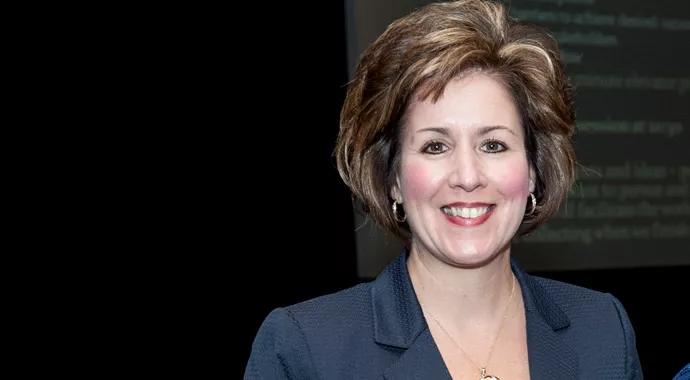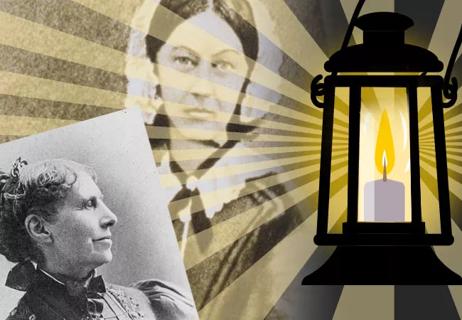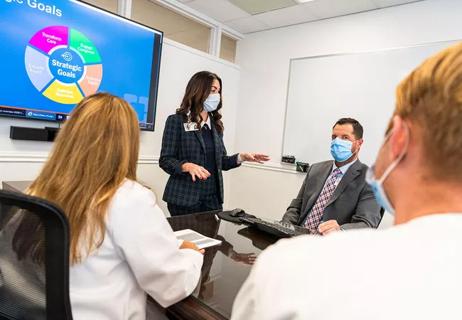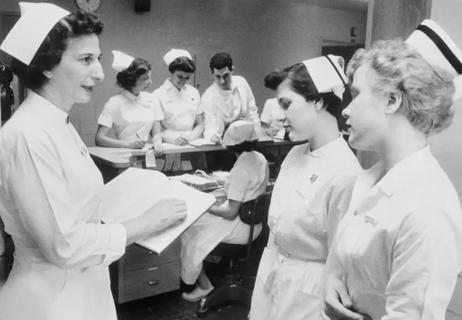Nursing: where we’ve come and what lies ahead

By Kelly Hancock, MSN, RN, NE-BC
Advertisement
Cleveland Clinic is a non-profit academic medical center. Advertising on our site helps support our mission. We do not endorse non-Cleveland Clinic products or services. Policy
As the healthcare industry welcomes a new year, nursing leadership teams across the globe have spent the past few months reflecting, evaluating, strategizing and planning for what lies ahead. At Cleveland Clinic, the roughly 20 executive nurse leaders of our Nursing Institute Council have held monthly nursing leadership meetings, team retreats and more to plan for 2015.
To ensure continued success for Cleveland Clinic’s 12,000-member nursing team and validate our promise to deliver only the highest quality, safest care to our patients, our year-end planning sessions discussed the macro and micro landscapes of healthcare and the nursing profession. We evaluated how our organization is, or is not, prepared for the future.
Value-based care was the core of each discussion – accountable care, population health, financial incentives for outcomes and so on. How are we maximizing value for our patients by achieving the best outcomes at the lowest cost?
Our associate chief nursing officers depicted a modified SWOT analysis of our key initiative areas – nursing education and professional development; research and innovation; quality, practice and patient safety; and, informatics and technology. From inpatient to outpatient settings, we pinpointed notable needs or issues surrounding care delivery and our professional practice and service models, including an in-depth focus on areas such as surgical, ambulatory and emergency services. And, we dove deeper into the challenges and opportunities we felt were on our horizon.
Advertisement
So, what are our projections for the outlook of nursing this year? We have quite a few, but below are a handful that our nursing leaders felt important to share:
For each of our projections, we have devised an aligned strategy. However, this past year, the analysis we completed not only solidified strategic direction for our organization in 2015, it gave us an opportunity to reflect on the revolution of nursing throughout the past five years.
Advertisement
From 2009 to 2014, our industry saw unprecedented change and in our 2014 year-end review sessions, we took the opportunity to reflect further on this five-year span and consider how it has shaped where we are today. Below are a few key changes that our team felt worth noting.
2009: Nurse-led model of care and nurse advocacy
In 2009, professional change was at an all-time high as the role of the nurse evidently shifted and the idea of the nurse-led model of care took hold more definitely across the board.
Nursing leadership teams were focused on giving nurses the resources they needed to take more control over their workplace environments in an effort to directly and positively impact the quality of patient care delivered. As published in a NursingTimes.net article, examples included allowing access to improvement tools and meaningful real-time information to presenting a better understanding of performance measures and their impact on patient care.
Nurse advocacy also took shape in 2009 as nurses saw firsthand that national legislative decisions were directly impacting the profession and the nurse’s role. More importantly, nurses began to realize they had a voice.
2010: Healthcare reform and IOM report
Today, we can all look back at 2010 and say, “This was the year of enormous healthcare change.” The healthcare reform act marked a time of redesign and reorganization, working toward better patient outcomes at a more reasonable cost.
From disease prevention to chronic care management for an aging, sicker and more diverse patient population, nurse leaders were exploring new opportunities for nurses to deliver care and lead change. Nurse-led innovations became a priority, as did nursing research. Nursing education took a refined shape in order to better prepare nurses for the ‘new face of nursing.’ Expansion in scope of practice was pivotal and developing leadership at every professional level was essential.
Advertisement
Additionally, the monumental Institute of Medicine (IOM) report offered a blueprint for our profession’s future.
2011: Nurse education and staffing
As we entered 2011, the need for experienced nurses was continually rising. More nurses were exiting the job market and while new graduates entered at a steady pace, the intensity of work remained. Additionally, the preparation required to accommodate for the rising number of patients who would be entering the system weighed heavy on many nurse leaders.
The focus shifted from task-oriented nursing to critical thinking nursing. And, advanced degrees were no longer optional with the IOM’s demands that nurses with baccalaureate degrees be at 80 percent by 2020.
Our profession saw hiring surges, refined ideas for onboarding, mentoring and nurse residency programs and a renewed focus on quality and safety indicators, the use of information technology to enable clinical practice, and more.
2012: Patient experience, safety and quality
As reported by HealthLeaders in a November 2011 article, 2012 was the year that patient experience was predicted to ‘get real.’ A mid-year poll by Robert Wood Johnson, NPR and Harvard School of Public Health found one in three patients who stayed in a hospital at least one night, reported that “nurses weren’t available when needed or didn’t respond quickly to requests for help.” In the same poll, three in 10 hospitalized Americans said, “there was poor communication among the doctors, nurses and other health care professionals involved in their care.”
Advertisement
Additionally, in the 2012 HealthLeaders Nurse Leaders Report, nurse leaders cited patient experience and satisfaction and clinical quality and safety as their organization’s top two priorities for the next three years.
Patient experience became more than direct patient care and safety and quality indicators were consistently top of mind. Nurse leaders were focused on ways to change healthcare delivery and more nurses were speaking on national and international levels, publishing scientific research and actively addressing healthcare policy.
2013: Care coordination and healthcare culture
As we entered 2013, care coordination and overall community health was at the forefront as healthcare teams looked to increase patient education and reduce readmissions. Comprehensive care plans based on evidence-based care paths were being developed to reduce unnecessary readmissions and emergency department visits. Initiatives were set forth on the realm of community education to promote overall health and wellbeing.
Quality of care throughout the continuum became a focus for many and quality-related data became more transparent. Patients were taking a more active role in their heath and health system cultures were changing – and sustaining. As reported by HealthLeaders, 2013 was a landmark year for nurse safety due to the national interdisciplinary standards for safe-patient handling released by the ANA.
Patient outcomes were noticeable beyond bedside care, and value-based purchasing was clearly the way of the future.
2014: Value-based purchasing and the Affordable Care Act
In 2014, much time was spent in preparation and response to the continued implementation of the Affordable Care Act as the start to private coverage began. Value-based purchasing was a consistent industry term throughout the year as it was the primary driver for all things within the national health system network.
We saw increased opportunities for registered nurses to practice at the top of their abilities, including nurse practitioners practicing independently, to the full extent of their education. Nursing strategies and initiatives continued to reflect the IOM’s report on the future of nursing, with movements made to increase the presence of nurses on hospital, state and federal boards and in general health policy. Additionally, retirement for the baby boomer generation spurred – both in nursing practice and nursing higher education settings.
Building on five years of significant change, the outlook is bright and the future promising as the nursing profession kicks off 2015. Driven by healthcare reform, value-based care will continue to be the way of the future with more nurses poised to lead industry change.
Kelly Hancock is the Executive Chief Nursing Officer of the Cleveland Clinic Health System, and Chief Nursing Officer of Cleveland Clinic Main Campus.
Advertisement

By listening closely and responding authentically, leaders can create an environment where nurses feel valued

Communication and self-reflection key to world-class patient care

Nurse leaders play a pivotal role in employee engagement, quality, safety – and, yes, patient care

Text highlights historic contributions to research, education and clinical care

Insights and advice from a nursing leader

Find balance, slow down, seek feedback and more

A new age in practice, physician partnerships and more

Insight on heart failure awareness and the work of HFSA